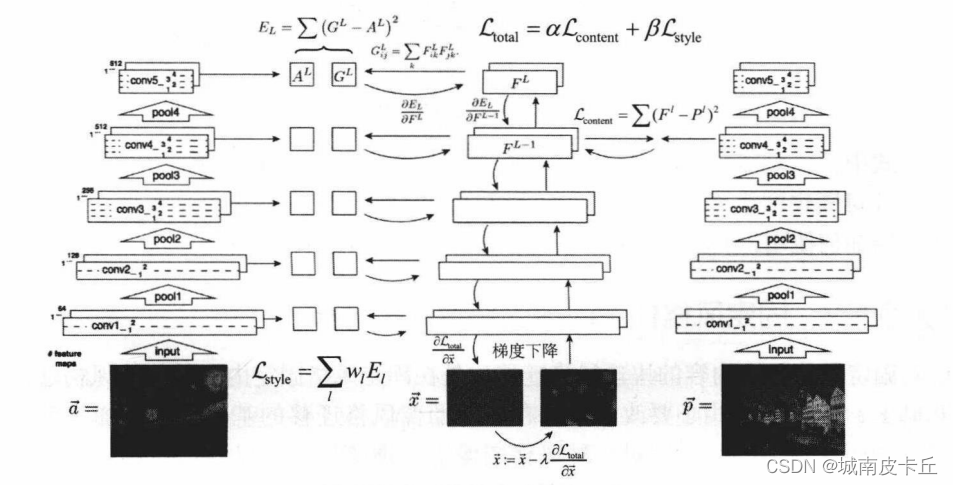图像风格迁移是图像纹理迁移研究的进一步拓展,可以理解为针对一张风格图像和一张内容图像,通过将风格图像的风格添加到内容图像上,从而对内容图像进行进一步创作,获得具有不同风格的目标图像。基于深度学习网络的图像风格迁移主要有三种类型,分别为固定风格固定内容的风格迁移、固定风格任意内容的快速风格迁移和任意风格任意内容的极速风格迁移。
图像风格迁移主要任务是将图像的风格迁移到内容图像上,使得内容图像也具有一定的风格。其中风格图像通常可以是艺术家的一些作品,如画家梵高的《向日葵》《星月夜》,日本浮世绘的《神奈川冲浪里》等经典的画作,这些图像通常包含一些经典的艺术家风格。风格图像也可以是经典的具有特色的照片,如夕阳下的照片、城市的夜景等,图像具有鲜明色彩图像。而内容图像则通常来自现实世界,可以是自拍照、户外摄影等。利用图像风格迁移则可以将内容图像处理为想要的风格。
1.固定风格固定内容的普通风格迁移
固定风格固定内容的风格迁移方法,也可以称为普通图像风格迁移方法,也是最早的基于深度卷积神经网络的图像风格迁移方法。针对每张固定内容图像和风格图像,普通图像风格迁移方法都需要重新经过长时间的训练,这是最慢的方法,也是最经典的方法。固定风格固定内容的风格迁移方法思路很简单,就是把图片当作可以训练的变量,通过不断优化图片的像素值,降低其与内容图片的内容差异,并降低其与风格图片的风格差异,通过对卷积网络的多次迭代训练,能够生成一幅具有特定风格的图像,并且内容与内容图片的内容一致,生成图片风格与风格图片的风格一致。










 订阅专栏 解锁全文
订阅专栏 解锁全文
















 828
828











 被折叠的 条评论
为什么被折叠?
被折叠的 条评论
为什么被折叠?










